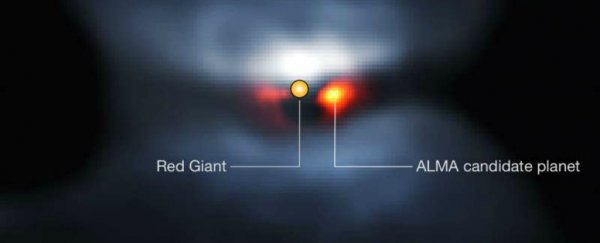What will happen to the Sun 5 billion years from now, and how will it impact the planets in our Solar System, specifically Earth?
To answer that, a team of astronomers from Belgium have set their sights on a distant star called L2 Puppis, which lies 208 light-years away and provides an accurate depiction of what might happen when our Sun turns into a red giant.
The team of astronomers from the University of Leuven in Belgium is using a star that – 5 billion years ago – could have been the Sun's twin, to witness our Solar System's future. And it's not looking great.
"We discovered that L2 Puppis is about 10 billion years old," said team member Ward Homan.
"Five billion years ago, the star was an almost perfect twin of our Sun as it is today, with the same mass. One-third of this mass was lost during the evolution of the star. The same [thing] will happen with our Sun in the very distant future."
To pull this observation off, the team used the European Southern Observatory's (ESO's) Atacama Large Millimeter/submillimeter Array (ALMA) in Chile. One of the most powerful radio telescopes in existence which uses 66 radio antennas to create a virtual telescope that is a remarkable 16 kilometres (9 miles) in diameter.
With such a powerful telescope, the team was able to accurately study L2 Puppis, making connections between it and the inevitable fate of the Sun.
"Five billion years from now, the Sun will have grown into a red giant star, more than a hundred times larger than its current size. It will also experience an intense mass loss through a very strong stellar wind," said team member Leen Decin.
"The end product of its evolution, 7 billion years from now, will be a tiny white dwarf star. This will be about the size of the Earth, but much heavier: one teaspoon of white dwarf material weighs about 5 tonnes."
While many of us already knew that the Sun would eventually die out in a blaze of glory, this is the first time a team has been able to actually look into a telescope and see what that will look like first hand.
Also, besides the end of the Sun, one of the bigger and harder to answer questions is what will happen to the planets that orbit it, specifically this blue one we call home?
In short, no one really knows what will befall our planet itself, but it's definitely not going to be good for us or any other life on Earth.
"The fate of the Earth is still uncertain," Decin explained. "We already know that our Sun will be bigger and brighter, so that it will probably destroy any form of life on our planet."
"But will the Earth's rocky core survive the red giant phase and continue orbiting the white dwarf?"
What they do know is that planets such as Mercury and Venus will likely be eaten by the enlarged star, completely wiping them out.
Though further investigation is needed for the team to understand what will totally happen to Earth, they do have a lead.
As it turns out, there's a rocky planet orbiting L2 Puppis at about a distance of 300 million kilometres (186 million miles) – about twice the distance between the Earth and the Sun. Here's what they think the system looks like:
 P. Kervella
P. Kervella
The team hopes to be able to study that planet in the coming months to better understand the fate of Earth and the rest of the planets in the Solar System that lie further away.
The team's work was published in Astronomy and Astrophysics.
